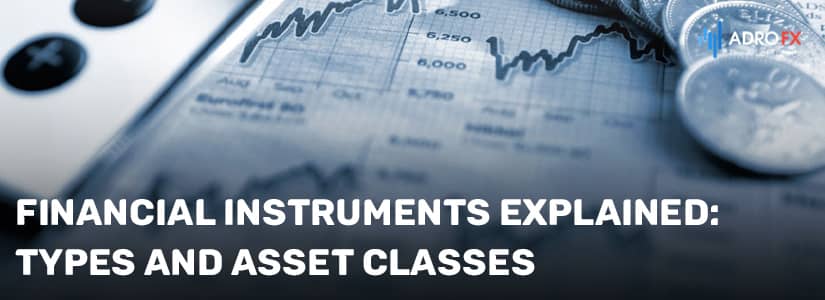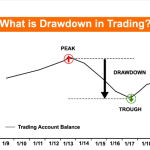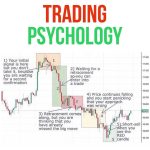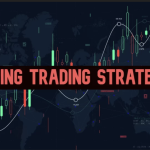
By ATGL
Updated March 27, 2024
As an investor navigating the markets, you have access to a wide variety of trading instruments across different types and asset classes. This guide is designed to help you understand these instruments so you can make informed decisions that align with your investment goals and risk tolerance. Recognizing the range and functionalities of these trading instruments is fundamental to optimizing your portfolio’s performance.
What Are Considered Trading Instruments?
Trading instruments are the financial assets and contracts you can buy and sell in the markets. These are the tools you use to execute your investment strategies, and they range from owning shares in companies to trading derivatives for speculation or hedging. Each trading instrument offers unique opportunities and risks, serving as a crucial component of your investment approach to meet your financial aspirations.
The 8 Most Traded Types of Instruments You Should Know
Navigating the financial markets involves understanding the most commonly traded instruments. These instruments are both tools for investment as well as indicators of market health and investor sentiment. Here are the eight types of trading instruments every investor should be familiar with.
1. Stocks Representing Ownership in a Company
Stocks are perhaps the most well-known trading instruments. When you buy a stock, you’re purchasing a share of ownership in a company. This ownership stake entitles you to a portion of the company’s earnings and assets. Stocks are traded on stock exchanges and can provide significant returns through capital appreciation and dividends. However, they also come with risks, as the value of stocks can fluctuate widely based on the company’s performance and market conditions.
2. Exchange-Traded Funds (ETFs) Traded on Stock Exchanges
ETFs are investment funds traded on stock exchanges, much like stocks. They hold assets such as stocks, commodities, or bonds and generally operate with an arbitrage mechanism designed to keep the trading close to its net asset value, though deviations can occasionally occur. ETFs offer a cost-efficient way to gain exposure to a broad range of assets, allowing for diversification within your investment portfolio. They are popular among investors for their liquidity, flexibility, and ease of trading.
3. Contract for Difference (CFD) Based on Entry and Closing Prices
A Contract for Difference (CFD) is a derivative trading instrument that allows investors to speculate on the rising or falling prices of fast-moving global financial markets or instruments such as shares, indices, commodities, currencies, and treasuries. With a CFD, you don’t own the underlying asset but instead trade on the price movement, allowing for potential profits or losses from the difference between the entry and closing prices of the contract. CFDs offer leverage, meaning you can control a large position with a small amount of capital, but this also increases the risk, as losses can exceed deposits.
4. Futures Contracts for Buying or Selling Assets
Futures contracts are agreements to buy or sell a specific asset at a predetermined price on a future date. As an investor, you can use futures to speculate on the price movement of commodities, indices, or financial instruments without the need to own the underlying asset directly. These contracts can also serve as a valuable tool for hedging, allowing you to manage the risk associated with price fluctuations in your portfolio.
5. Options Contracts That Allow Put or Call Options
Options contracts provide you the right, but not the obligation, to buy (call options) or sell (put options) an underlying asset at a specified price before a certain date. This flexibility makes options a powerful instrument for both speculation and risk management. Whether you’re aiming to protect your investments from market downturns or to capitalize on anticipated price movements, options can offer strategic advantages to your trading approach.
6. Forward Contracts Used for Hedging and Risk Reduction
Forward contracts are customized agreements between two parties to buy or sell an asset at a future date for a price that is agreed upon today. Unlike futures, forward contracts are not traded on exchanges and are not standardized, offering you greater flexibility to tailor the terms to your specific risk management needs. Primarily used for hedging against price changes in currencies, commodities, and other assets, forwards can effectively secure prices and mitigate potential losses in your investment strategy.
7. Metals As Standalone Trading Instruments
Investing in metals allows you to diversify your portfolio beyond traditional financial instruments. Metals such as gold, silver, platinum, and palladium can be traded in various forms, including physical bars, coins, and through financial products like futures contracts and exchange-traded funds (ETFs). These commodities are valued as a hedge against inflation, currency devaluation, and economic uncertainties, making them a strategic choice for preserving wealth.
8. Currency Derivatives Most Commonly Used in Forex Trading
Currency derivatives, including options, futures, and forwards, are crucial instruments in the forex (foreign exchange) market. These contracts enable you to speculate on the movement of currency exchange rates or hedge against foreign exchange risk. Whether you’re managing international investments or seeking exposure to currency markets, understanding and utilizing currency derivatives can enhance your financial strategy’s effectiveness and protect against adverse movements in exchange rates.
What Are the Classes of Assets or Asset Baskets?
As you build and refine your investment portfolio, you’ll want to understand the different classes of assets or asset baskets available to you. These categories include:
- Equities: When you invest in stocks, you buy company ownership shares. This asset class offers the potential for significant returns but comes with higher volatility and risk.
- Fixed Income: By purchasing bonds, you’re lending money to issuers (corporations or governments) in exchange for regular interest payments and the return of the bond’s face value at maturity. Bonds are generally considered less risky than stocks, providing a steadier income stream.
- Commodities: This class covers physical goods like metals, energy, and agricultural products. Investing in commodities can protect against inflation and diversify your portfolio.
- Currencies: Trading in the forex market involves buying and selling different currencies. It’s a way to speculate on changes in exchange rates or hedge against currency risk in other investments.
- Real Estate: Property investments can offer rental income and price appreciation. They can also be a hedge against inflation and a source of diversification.
- Alternatives: This broad category includes hedge funds, private equity, and cryptocurrencies, offering unique risks and rewards not typically found in more traditional investments.
Discover the Best Trading Platform for Professional Traders
Professional traders require a platform that offers advanced analytical tools, a comprehensive range of trading instruments, and efficient execution. Finding a solution that supports your trading strategies with customizable charts, technical indicators, and real-time market data is crucial. Security, reliability, and responsive customer support are essential to ensure a seamless trading experience.
Elevate your trading with a platform tailored for professionals by exploring our memberships at Above the Green Line.






